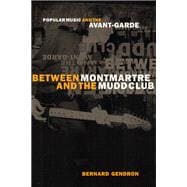
What is included with this book?
| Acknowledgments | ix | ||||
|
1 | (28) | |||
| POP INTO ART: FRENCH MODERNISM | |||||
| SECTION A: CABARET ARTISTRY (1840-1920) | |||||
|
29 | (28) | |||
|
57 | (26) | |||
| SECTION B: PARIS IN THE JAZZ AGE (1916-25) | |||||
|
83 | (20) | |||
|
103 | (18) | |||
| ART INTO POP: AMERICAN POSTMODERNISM | |||||
| SECTION A: JAZZ AT WAR (1942-50) | |||||
|
121 | (22) | |||
|
143 | (18) | |||
| SECTION B: THE CULTURAL ACCREDITATION OF THE BEATLES (1963-68) | |||||
|
161 | (28) | |||
|
189 | (38) | |||
| SECTION C: NEW YORK: FROM NEW WAVE TO NO WAVE (1971-81) | |||||
|
227 | (22) | |||
|
249 | (26) | |||
|
275 | (24) | |||
|
299 | (30) | |||
|
317 | (12) | |||
| Notes | 329 | (28) | |||
| Bibliography | 357 | (18) | |||
| Index | 375 |
The New copy of this book will include any supplemental materials advertised. Please check the title of the book to determine if it should include any access cards, study guides, lab manuals, CDs, etc.
The Used, Rental and eBook copies of this book are not guaranteed to include any supplemental materials. Typically, only the book itself is included. This is true even if the title states it includes any access cards, study guides, lab manuals, CDs, etc.